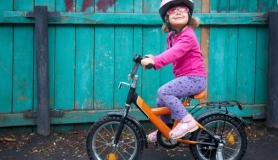WEEKLY RHYTHMS
Life is busy. With shopping to do, meals to prepare, washing to keep up with, along with what seems like hundreds of other household chores it can seem like the to do list is endless. Throw a handful of children and home education into the mix and it can all seem overwhelming.
I am a home-educating stay at home mum of five children aged 3-13 years old, so life here is always busy. I know that that is not going to change anytime soon but I can try to create some moments of calm amidst the chaos. Moments of connecting together as a family as well as space for me to breathe on my own.
Creating a daily and weekly rhythm is a really good place to start. For us as a family this evolves over time as the needs and ages of my family change , as a new baby arrives, as a toddler begins to dominate everyone’s day, as teens begin to assert themselves, as new activities and interests get taken up.
We are eclectic home educators, weaving in strands from many different educational styles and philosophies to create our own unique tapestry of learning. Our influences include Steiner Waldorf, Charlotte Mason, Project Based Homeschooling, Wildschooling, Regio Emilia and Unschooling. One of the things I love about Steiner is the way rhythm flows into each day. It is not a strict timetable- more of a gentle plan for each day, with busy activities followed by more calming activities a bit like the ebb and flow of the tide.
Our day begins with breakfast together and then we usually try and spend some time catching up on chores. After that we normally head outside for either a play in the garden or a walk in the woods or on the beach. If I skip the outdoor time my two youngest will usually drive me and each other mad with all their energy and our day will not go so well.
After time outdoors we will have a snack and sit down together for our Morning Basket. Our walk and Morning Basket are my two favourite parts of the day. In our Morning Basket we will do lots of read alouds: we have a novel (or two!) which I read to them several times a week, as well as various other picture story books and non-fiction books linked to topics we are currently learning about. Over the week we also try to look at a piece of poetry, listen to a piece of classical music, sing songs together, learn about a piece of artwork as well as learn random interesting facts.
After lunch I try to encourage some quiet time and the older children will usually take themselves off to read or play lego, while I spend some time with the two little ones. And then we all come back together for a more focused activity before we prepare our evening meal.
Our weekly rhythm focuses on the more academic subjects towards the beginning of the week and moves towards creative subjects at the end of the week. We have a language and music day, topic/projects day, maths/inventions day, outdoor/ nature study/science day, and a homecrafting/ being together day.
Sometimes we abandon all of that and will immerse ourselves in a particular project for a whole week or sometimes several weeks, although we do still retain a rhythm to our days with a daily walk, read-alouds and shared meals.
THE GIFT OF READING
Reading and time in nature form the foundations of what we do as a family and I can’t imagine our days without them.
I have always read stories to my children and they are all bookworms. We regularly read picture books, which the little ones love, being engaged by both the story and the pictures. These also tend to be fairly short so there is not too much room for little ones to get distracted. However, trying to read a novel to everyone when little ones are around is a different matter. I remember when I first started trying to read novels with my children. I naively thought we could all snuggle up on the sofa under a blanket and how cosy and lovely it would be. The reality was very different! Although the older ones usually listened well, it would inevitably end up with someone poking someone else, arguments about who was going to sit next to me and the toddler throwing toys across the room and screaming before I had even finished the first paragraph. By chance earlier this year, I decided to read to them whilst they were all playing with playdough at the kitchen table and was amazed at how easy it was to read. No squabbles, screaming or poking. Just calm happy children. So that
is how we do our read-alouds now – at the kitchen table with something like playdough or drawing to occupy their hands while they listen.
I am passionate about books and reading and firmly believe that it is one of the best gifts I can give to my children. Before they can read just snuggling up and sharing a story together creates a close bond and a love of books. And once they are able to read then a whole wide and wonderful world opens up to them: they can journey to far and distant lands, time travel, fly to imaginary lands on a magic carpet, learn how to make a Rube Goldberg machine. . . the possibilities are endless. Reading fires the imagination, piques curiosity and helps make connections. My children are avid book readers of both fiction and non-fiction and because of this my job is made so much easier – I rarely have to teach English skills of spelling, sentence structure, style of writing and so on as they have naturally picked these up through reading, meaning that we have more time to focus on the things we want to learn about. For example earlier this year they wanted to write newspaper reports about the Black Death to go in their Medieval projects.
We did not need to use up our time learning how to write a newspaper report as they had naturally grasped that already and so they could focus purely on researching the facts that they wanted to include. Also their general knowledge is already so vast that we don’t usually have to ‘learn the basics’ first and so can explore things at a deeper level.
LEARNING THROUGH THE NATURAL WORLD
Sometimes we get involved in a project and spend a few days immersed in what we are doing which is great but sometimes comes at a cost – everyone ends up getting a bit fractious. It is at these times that I need to step in and get everyone outside for a walk or a play. Nature is like a wonderful medicine for the soul. Children (and adults!) that were grumpy just a few minutes earlier become happier and calmer within just a few minutes of being outdoors. It is easy to fill our day with chores, home-ed learning and just life in general, but if we miss out on time outdoors then the rest of our day is always so much harder.
Besides the restorative effects of nature, the natural world is just such an amazing resource for learning. From science, to art, from maths to geography, history and personal development. The list is just so endless. There is just so much to learn while being outdoors.
When I just had little ones our outdoor time would be as simple as a play in the garden or at the park, a walk or a play at the beach. We still do these things but now I have bigger ones as well we also do nature journaling, more challenging walks and recently I created a series of bushcraft challenges for them. We also tend our allotment as a family and each of my children has a patch that they are responsible for.
A huge proportion of the learning curriculum can be taught outdoors in the natural environment, but above all else what I am really trying to do with my children is to instill a love of the natural world, a sense of awe and wonder, respect for our world as well as equip them with skills that will help them grow into capable and independent young people.
CURIOSITY CHILD LED LEARNING AND THE IMPORTANCE OF PLAY
Although I do still plan some of our learning, much of our learning is still child-led. As much as possible I try to allow the children to follow their own interests and passions. This may be as simple as choosing where to go for a walk or spending a day on a mini project about something they have suddenly become curious about. My daughter loves baking bread so she will often take herself off and experiment with a new recipe. My oldest son loves making maps so he will spend hours drawing intricate maps of imaginary worlds and one of my other sons loves making things so will spend ages creating all sorts of inventions. It is easy to worry that while children are playing that they are not doing school work and will get behind, but as Piaget and many others agree play is the work of childhood and is the place where learning happens naturally. Play is what they choose to do and because it is freely chosen the child easily becomes engrossed in it and learning happens naturally through being curious, experimentation, trial and error, repeated actions and through questioning. My job is to be there for my children, to listen, to answer their questions, to provide an environment in which opportunities exist and to ask them questions to encourage them to think more. I am more of a facilitator than a teacher. I enable the learning to happen and provide support where needed. I want my children to retain that passion for learning; that spark; to remain curious and to develop the skills needed to become independent learners.
EARLY MORNING ASPIRATIONS!
I am not just a full-time home-educator and stay at home mum, I am also a maid, chef, cleaner, washer-woman, mediator, counsellor, taxi driver and carer, so having time to myself is rare! But self- care is so important. It can be as simple as getting enough sleep to enable you to get through the bustle of the day, to setting aside time to develop a hobby. I am
lucky that I can function reasonably well on little sleep, so for me to feel happy and relaxed I need time to do something creative. As soon as the light evenings arrive I am in my garden or allotment and when the nights draw in I like to spend time doing crafts. This is not something I manage to do every evening, but even just one evening a week of
‘me time’ can be really beneficial. However, a real eye-opener for me this year was discovering just how calming it can be to have a bit of quiet time in the mornings before everyone
else wakes up. Time to wake up, mentally prepare for the day and just enjoy the stillness at the beginning of the day. It really makes a difference to how the day goes. If I am tired or stressed then my children will probably know about it. Likewise if I am happy and relaxed then they will also know about it as our day will go better. The same also applies to my children so rest, play and a gentle rhythm will help settle them back into being happy children.
We have been home-educating for many years now but by no means are all our days perfect. We still have tantrums, mess, piles of laundry and lots of noise, but amidst all of that we do still have many, many treasured moments, moments when everyone is completely absorbed in what they are doing, when things go right, when there is more laughter than tears, when I just want to freeze the moment and fix it in my memory for ever. It is this simple rhythm that enables us to have these moments of calm. When my children are busy making a mess and I start to feel stressed about it I try to remember one of my favourite quotes. . .’excuse the mess. . . we are busy making memories.’ Each new day brings a new start, new challenges and new adventures which we can share together and for that I am grateful.
New day new start new challenges new adventures
Annette Gallagher lives with her husband, 5 children and 3 cats in a beautiful part of Devon, close to tiny coves, long sweeping beaches, wild moorland and magical woodlands. She has a passion for home-educating her children, exploring the natural world, celebrating the seasons, reading books and creating a cosy home for her family.







